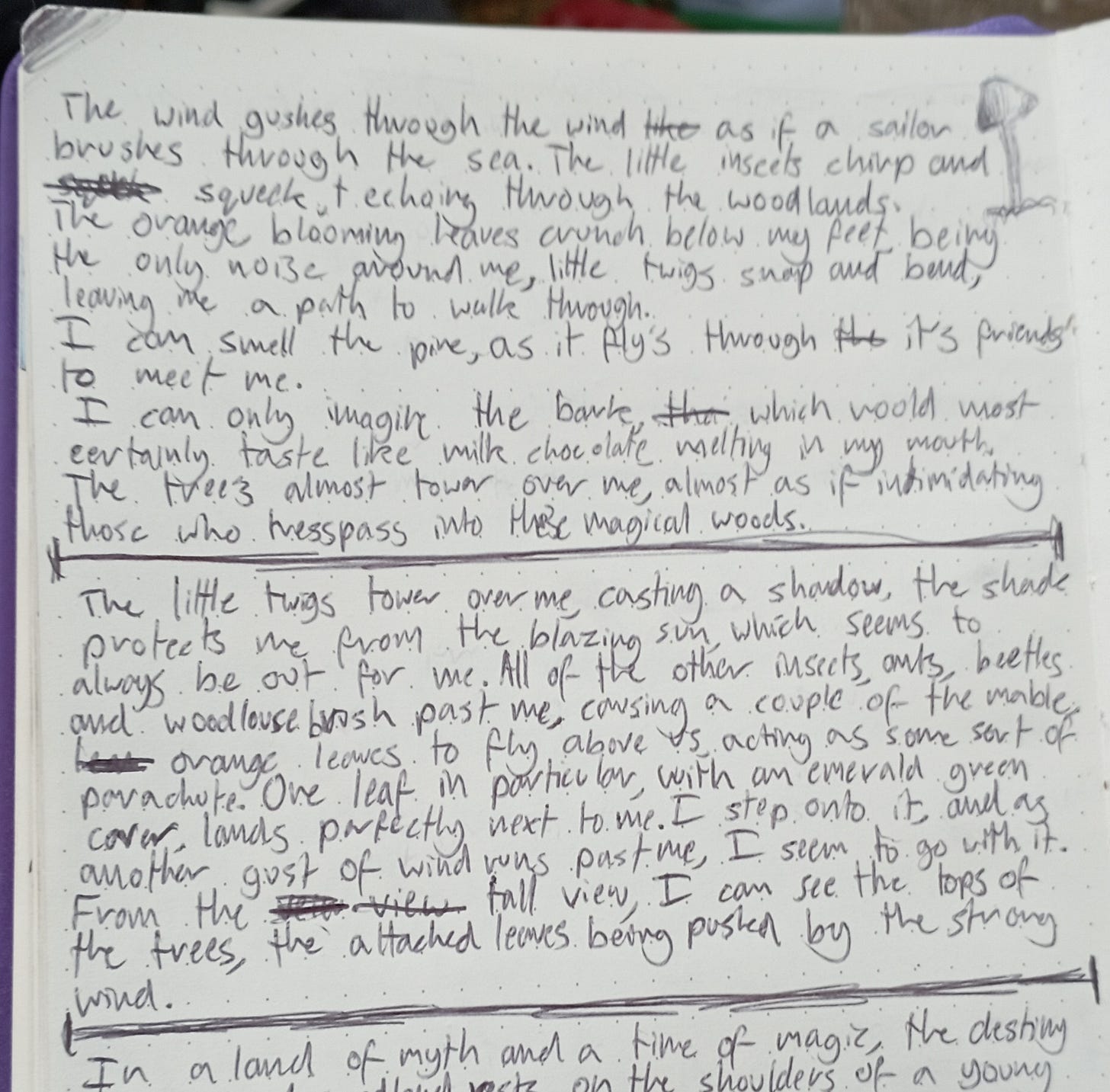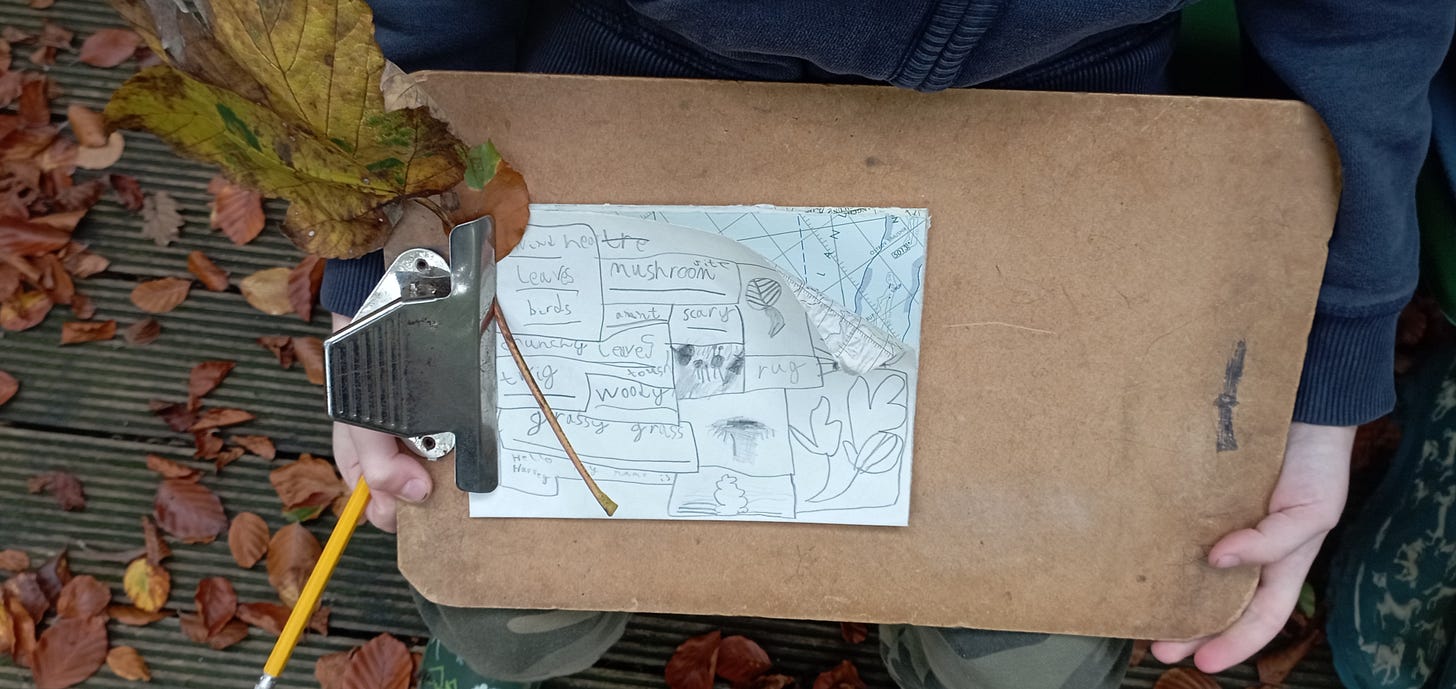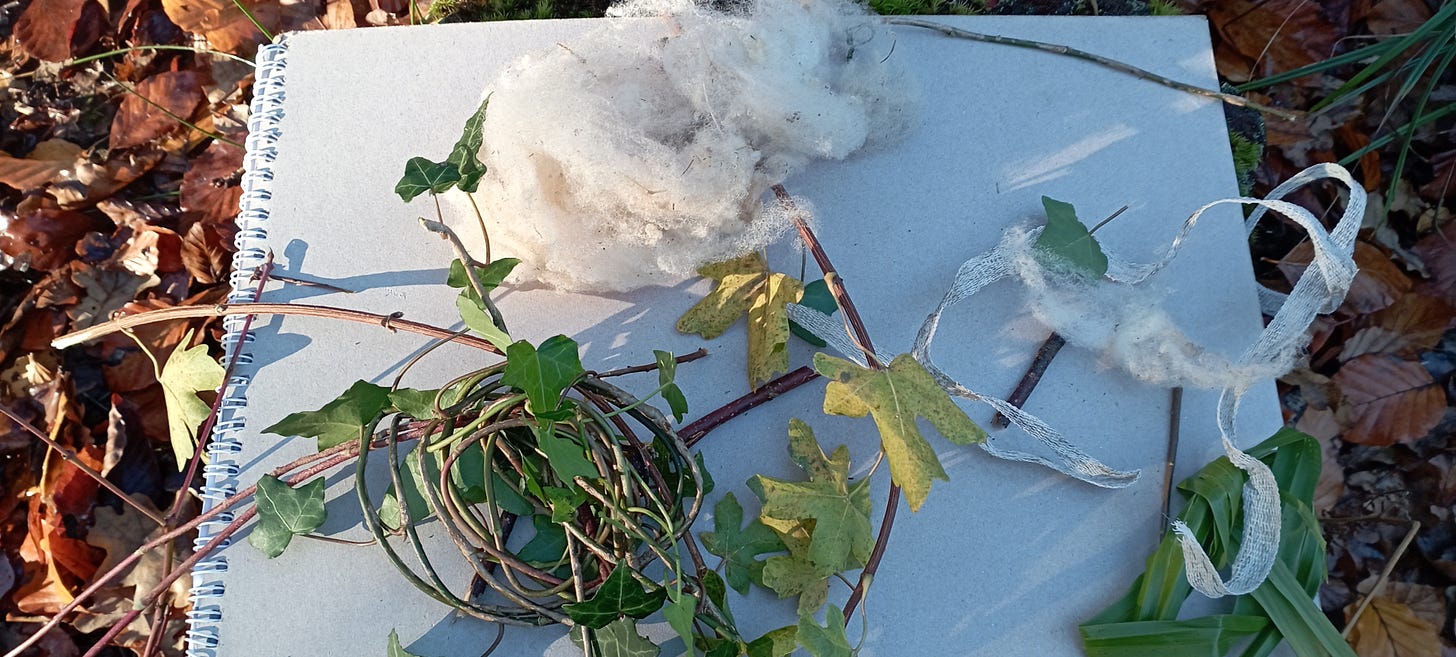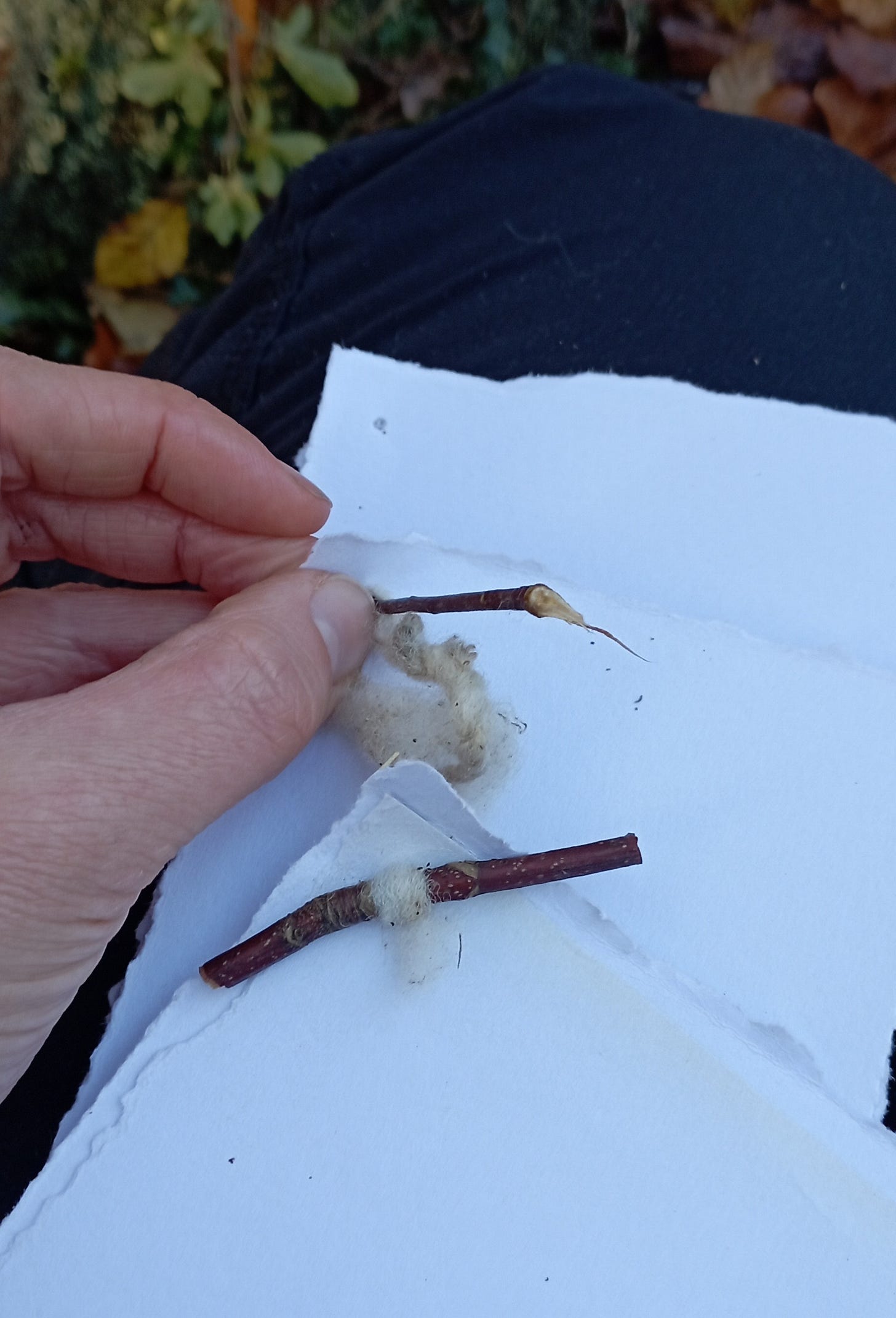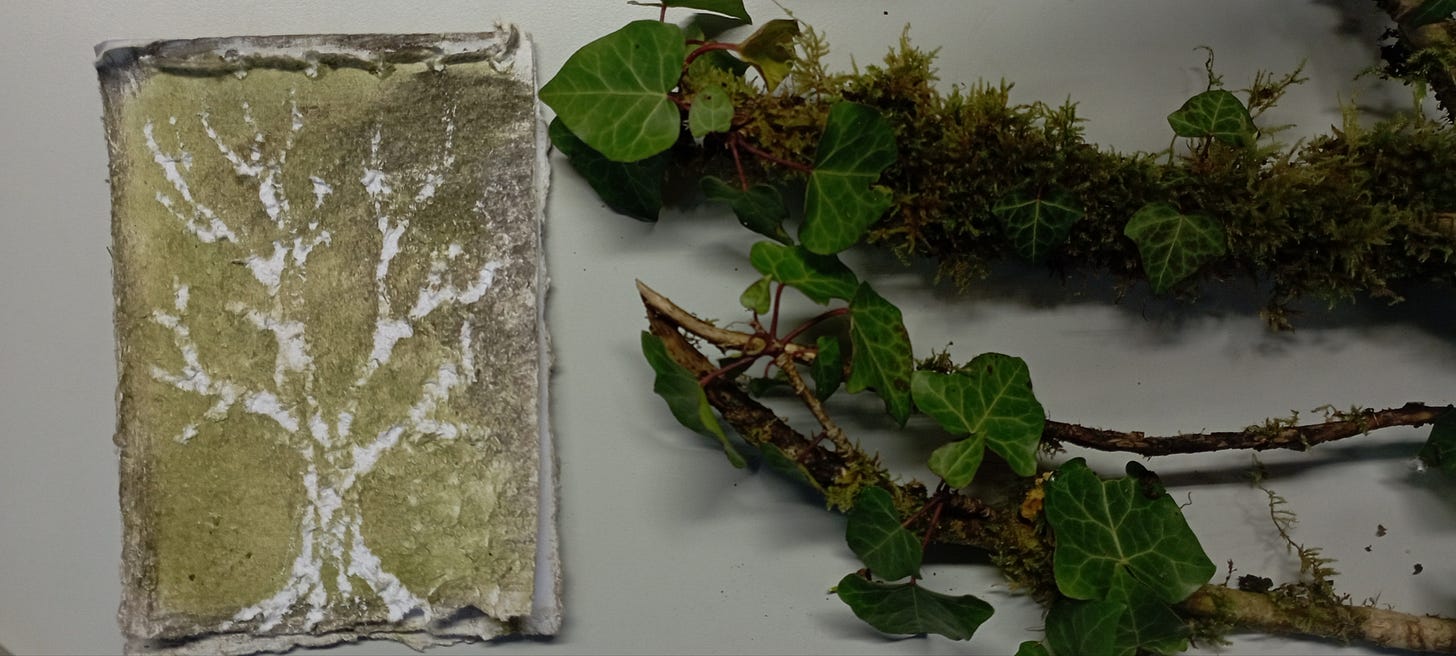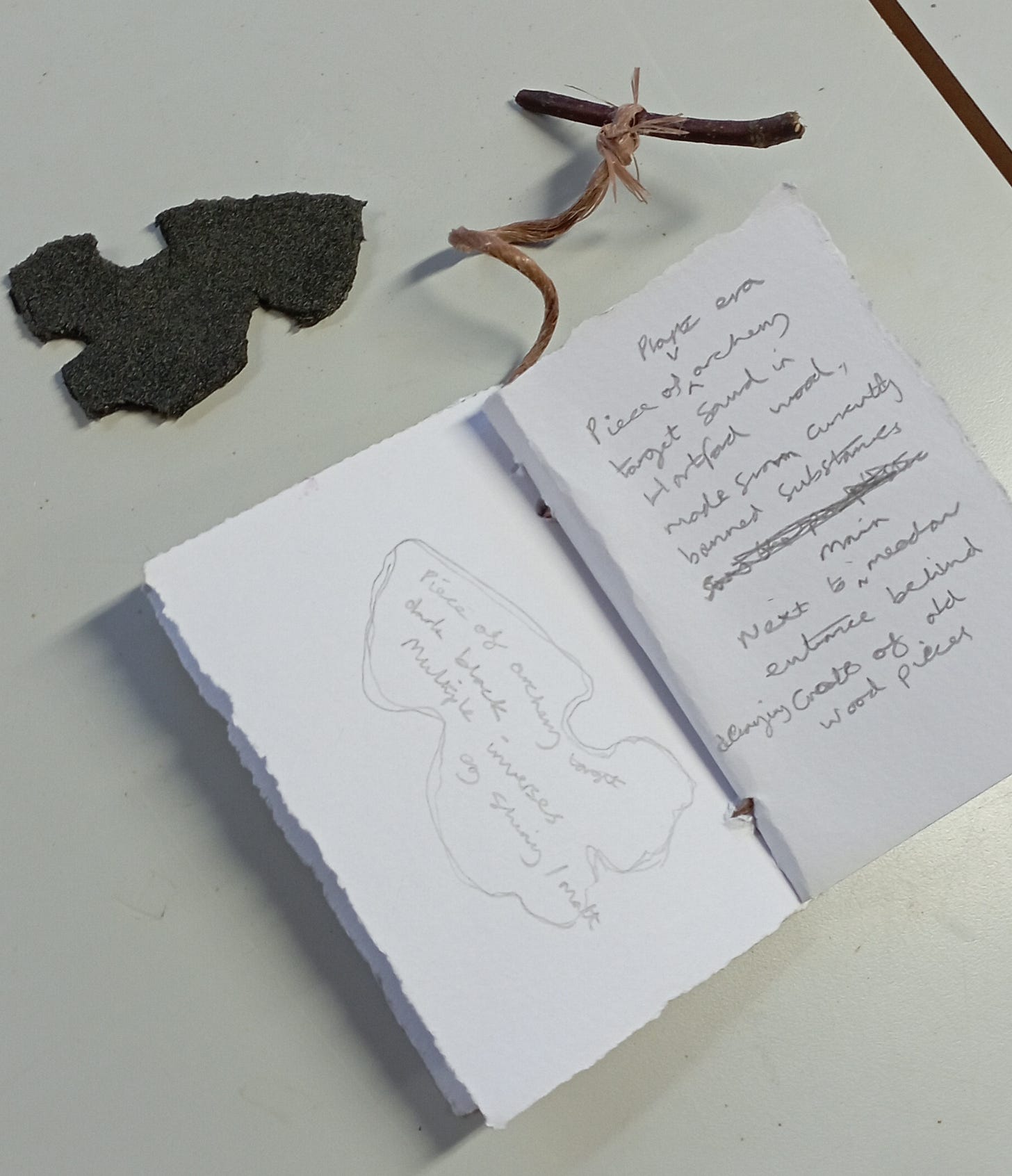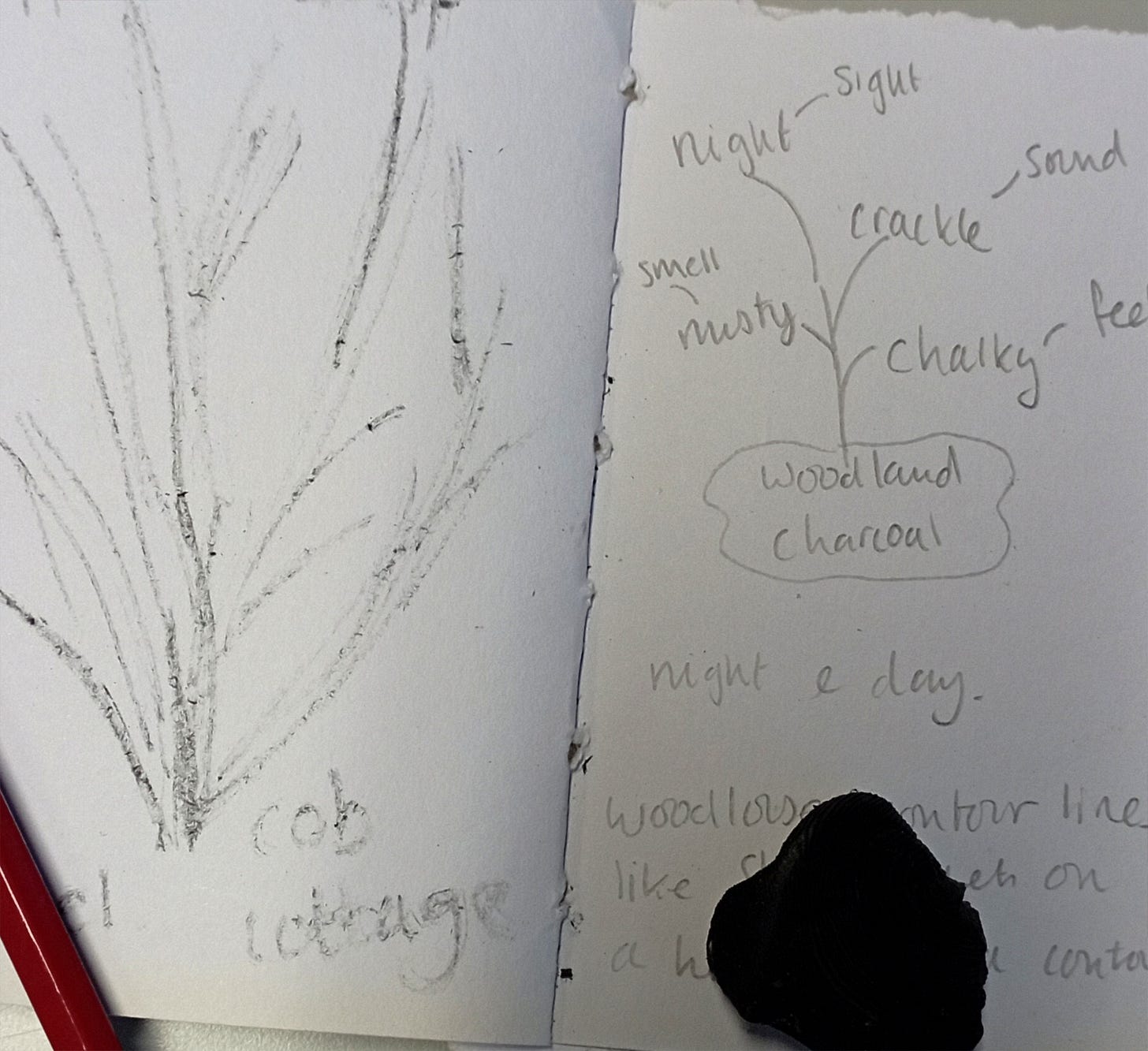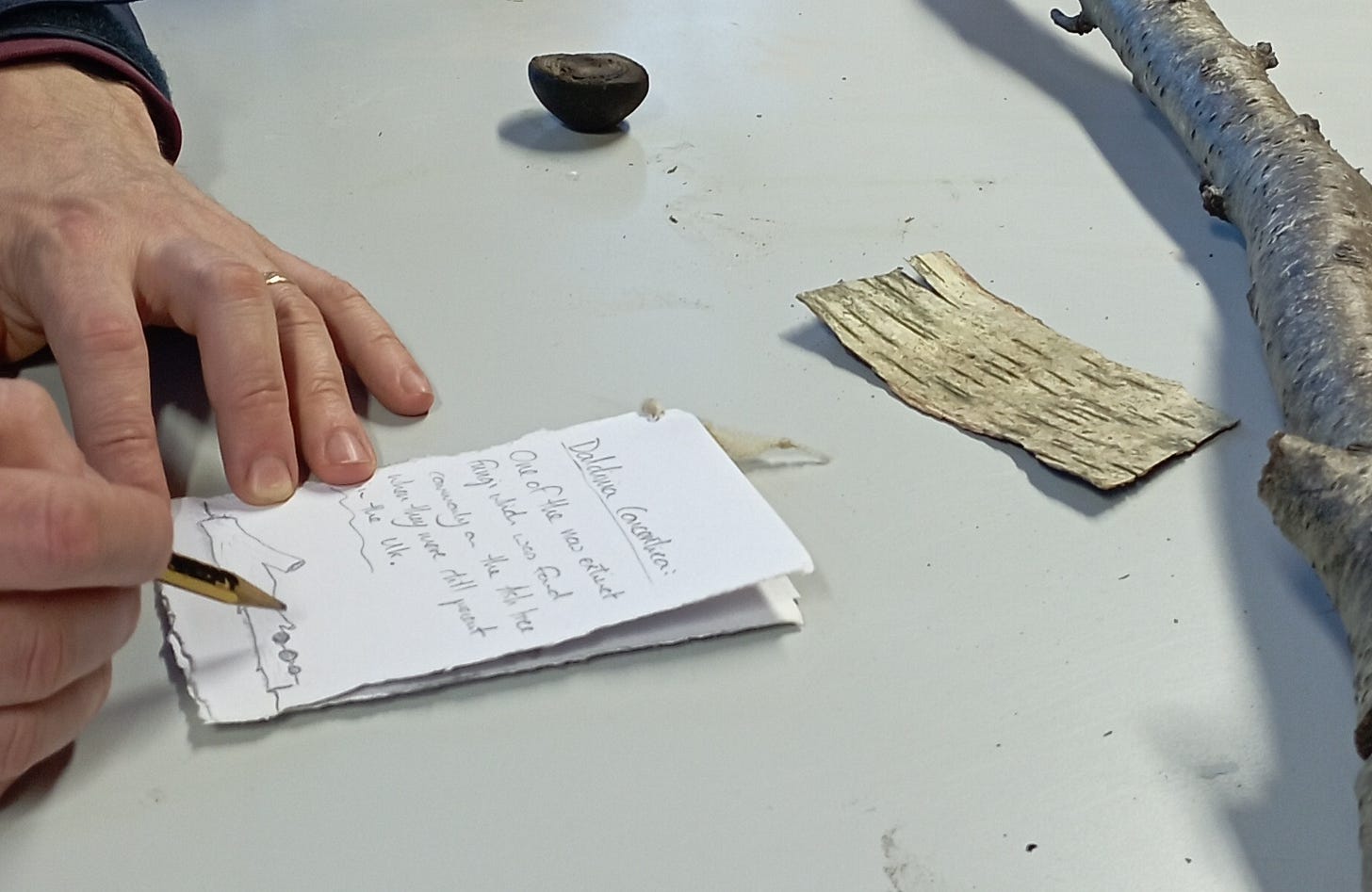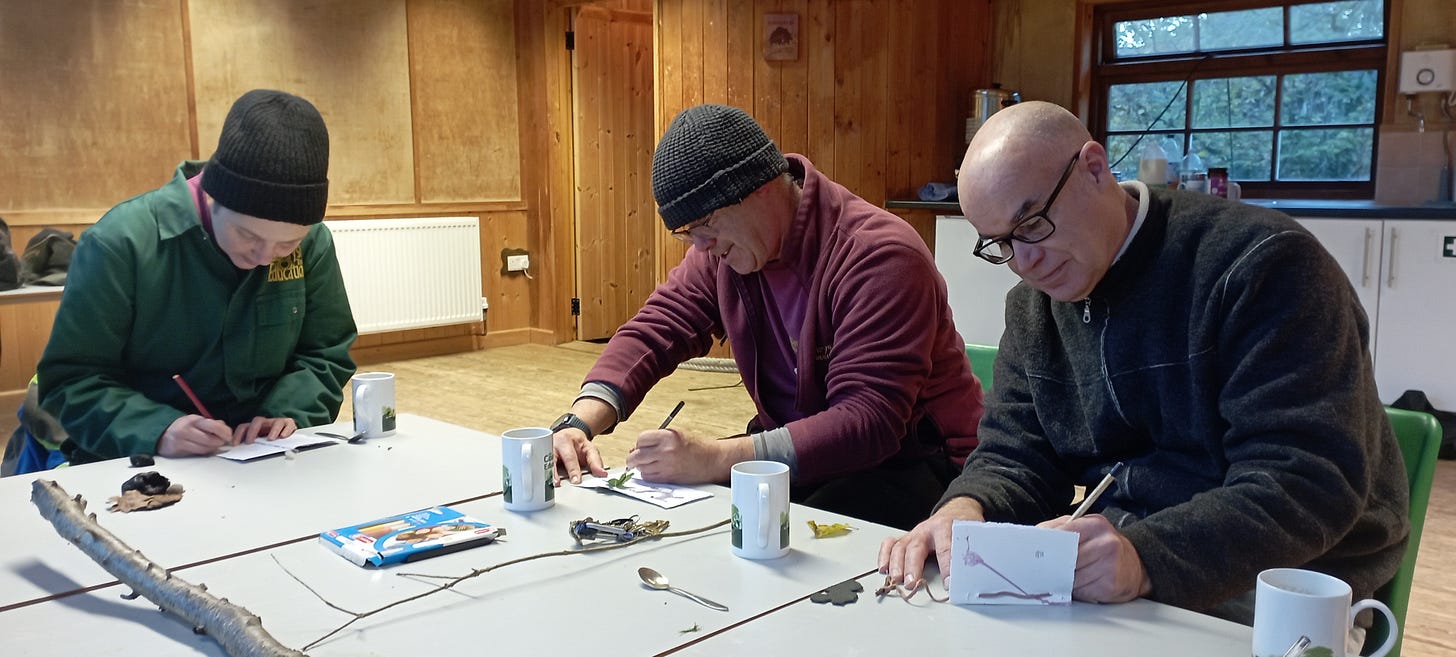New Forest Writer in Residence: Woodland Workshops
This month’s blog takes a closer look at using woodland workshops to introduce the forest (and writing) to different groups.
This residency is hosted by the Countryside Education Trust in Beaulieu, supported by Artfulscribe and funded by the New Forest National Park Authority’s Sustainable Communities Fund.
In the early stages of planning this residency, I thought a lot about how my writing is so connected with the material, tangible world around us. What I mean by that is that I’m inspired by the sensory experience of wherever I am. In the woods, that means being especially tuned in to things like the texture of bark, the smell of moss, the feeling of cutting wood - and they then turn up (or materialise!) in my writing. In my children’s books, for example, the characters are often found sewing or ink-making or climbing trees. And when I write poetry, I often start with a small part of the physical world that I’ve noticed (such as a piece of sheep’s fleece caught in a fence) and find that it has something to say about the wider world.
Not every writer works in this way, and I wouldn’t expect them to. But when it comes to running workshops, I’m really interested in giving other people an insight into my way of working, because I think it can be a way of approaching places, tasks and, of course, writing, in ways we haven’t before.
Last month I ran two workshops in Hartford Wood: one for twelve young people (who came with their parents) and another for staff at the Countryside Education Trust who work regularly in the woodland, but who haven’t written in it before. I could write a whole separate blog on why young people don’t get many opportunities to write outside - and why people who work outdoors aren’t often writers - but those thoughts deserve their own space, so here I’m simply going to outline the mechanics of these workshops, to provide a window into the way I work - but also hopefully to give ideas to other facilitators who would like to do the same thing.
Workshop for Young People
The first workshop had twelve young people who came along on a Saturday with their parents (and who had paid to be there). The only guidance really was that the workshops were mostly suitable for young people over 8 and under 18, which meant we got a really noticeable range of ages and personalities (including a very enthusiastic 6 year old, which was fine by me). The common factor was that everyone who booked a ticket seemed to be interested in exploring the outdoors and writing - a great place to start. The aim was to get them feeling as inspired as possible during the hour and fifteen minutes, so that they could find ideas to take away with them and use later if they wanted.
With parents, this was a large-ish group. We set about weaving through the forest paths to see as much of the woodland as possible. We visited the hazel coppice; a section of beech and oak woodland where the CET run den-building sessions (complete with dens, still intact); and the cob cottage, before returning to the treehouse classroom with a view of canopy. In each place, we did a different writing activity.
When parents are around (and in a group full of strangers) young people can feel a bit reluctant to share their ideas out loud - especially in a one-off session where the group haven’t built up a connection with each other. So the focus of this workshop was less on group sharing and more on the solitary experience of writing - and exploring it independently with the senses.
I think this is the way a lot of writers prefer to work anyway, so it’s a great opportunity to remind young people that it’s okay to be the kind of person that contemplates and experiences quietly (not always having to share with the class, like in school!). In the coppice coup, we thought about our senses - what we could hear, smell, see, touch (and imagine tasting, if we were a small creature). Moving to the den-building woodland, we imagined ourselves small animals in the landscape - and wrote from their perspective. Some were squirrels, other insects: and we imagined a journey through the woodland. Visiting the cob cottage, we imagined who might live there and what it would be like - focussing again on the textures of the thatch, the hearth, the rain that was starting to fall in the clearing.
I usually design the writing activities to be cumulative - for example, while writing about the cob cottage, you might think about the senses you used in the first writing activity and include them (or use the same method to find new material). But I never insist on it, because inspiration is just as likely to come afresh in this new spot.
Having once upon a time trained to teach English in a classroom, even now I have to consciously move away from the idea of a structured ‘lesson’ when planning my writing workshops - even as I shout about the benefits of writing outdoors and the freedom it brings. As a facilitator, I’m still exploring the balance between having too many activities and questions (risking the workshop feeling too much like school) - or having too few that young people feel lost or uninspired or overwhelmed - especially if they’re very used to the current education system. The same goes for workshops for adults, who are often used to structured workplaces - and who might find too much freedom a little bit scary.
I’m trying to find that balance in my own writing, too - and I think, as a facilitator, it’s okay to explore these sorts of quandaries with the workshop groups. I like to write alongside the participants and show them that my notebooks are messy and imperfect!
At the end of this workshop, we drew maps. Sometimes, I get everyone to make maps of out leaves and sticks as a prelude to creating a ‘real’ map, but it was a bit too rainy today.
Workshop with CET Staff
Unlike the young people who were new to the wood, the CET staff knew the woodland well. From my brief audit, it was the first time any of the staff had joined in with any kind of creative writing activity. I’m aiming to write a longer piece about what came out of this workshop - and include some of the materials we gathered in an exhibition at the end of the residency.
So, how did I approach a workshop for people who know the landscape well, but who are not much familiar with writing?
We started with a practical task - deconstructing some of the dens made by kids, so that they could be rebuilt by the next group. This involved dragging / lobbing / boomeranging six-to-twelve-foot-long poles across the leaf litter and got us warm and lead to a few laughs even though this is the sort of thing everyone there does regularly. The logic for me was that starting in a place and mindset we were familiar with would help everyone feel a bit less daunted by this being a ‘writing’ session.
So I didn’t jump into writing next, either. I’d brought along a bundle of materials (see below) that I’d found on the farm: bailing twine, wire, dogwood sticks, unwashed fleece - and tasked everyone to make their own notebooks , using these materials and others from the forest to sew or clamp together the paper I’d brought. I then sent everyone off to find something to colour in the cover with (e.g. plant material) and briefly lost half the group who set off determinedly in search of berries and such.
I then sent everyone off independently to find an object that reminded them of a significant or memorable moment in the woods, and made sure that they all had a good chunk of time to cross the woodland and meet back at the treehouse (it was getting dusky and it was time to write alongside a cup of tea, another important component in making everyone feel at ease in their first writing workshop).
My object - a cut piece of hazel from a coppice.
Two-thirds of the way through the workshop and I still hadn’t made anyone put pen to paper. I think this is important, because writing is also all the things we do before writing. We talked about the objects that we’d found and there were all sorts. My hazel branch reminded me of the first time I’d come to the CET before the pandemic and joined in coppicing. I wanted to model that this session was about sharing and collecting stories, rather than writing down something that was set in stone, or had to use certain words.
Originally, I’d thought it would be a good idea to pair up and retrace the steps to the places these objects were found. But as it was getting cold and dark, I decided instead that we should think about these objects in a museum - two hundred years from now. This led to a lot of thoughts (again, that I’ll write about another time) - especially as my chainsaw-cut piece of wood made me wonder if we’d need to explain petrol machinery to someone two hundred years in the future. Others were more cynical (would there be anyone to explain this to?) but it went to show that writing about this woodland cannot be extracted from the climate crisis.
(Incidentally, a piece of writing this week came out of seeing butterflies and bees, even after a freezing spell of snow…)
What I found particularly special about the workshop with CET staff, as a practitioner, was that I was invited into their own very personal experiences of the woodland - and only really caught a glimpse. I came away with a whole host of other things I wanted to explore and write about (secret wildlife! the changes in a woodland when a tree falls!) - and it also reaffirmed my feeling that making things, like the notebooks made from paper and wool - is my favourite way of experiencing nature. I definitely believe that stories are not just about words - and hopefully both these groups got a taste of that.
If you’re interested in joining future workshops for members of the public, please do subscribe to this blog, as I’ll post dates here. I’m also available for workshops in schools and can also run training for teachers. Get in touch if you’d like to collaborate!







